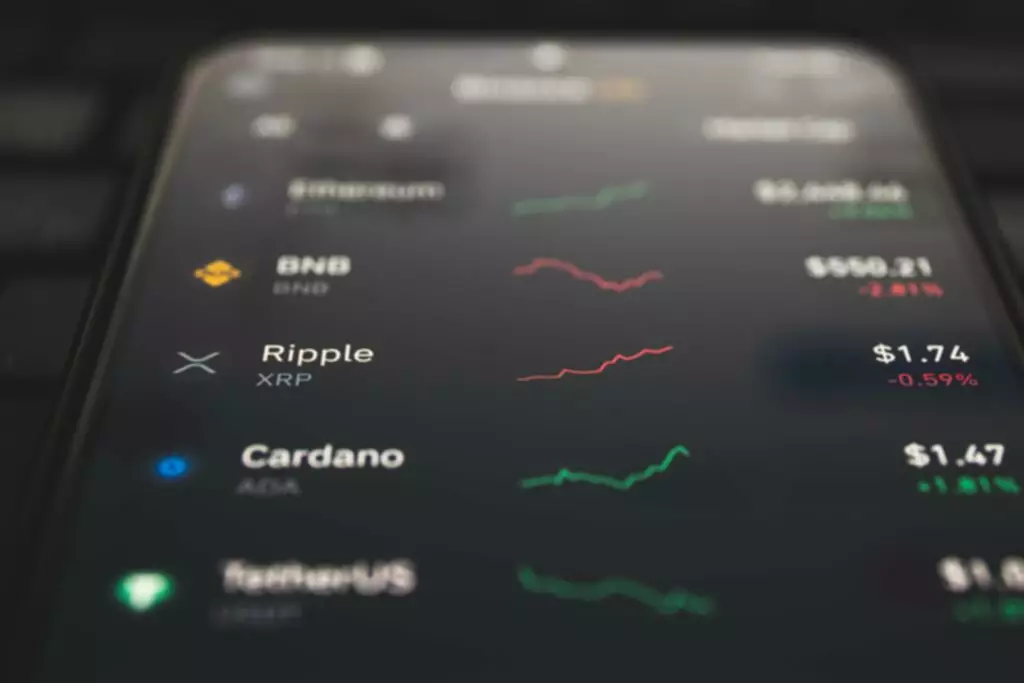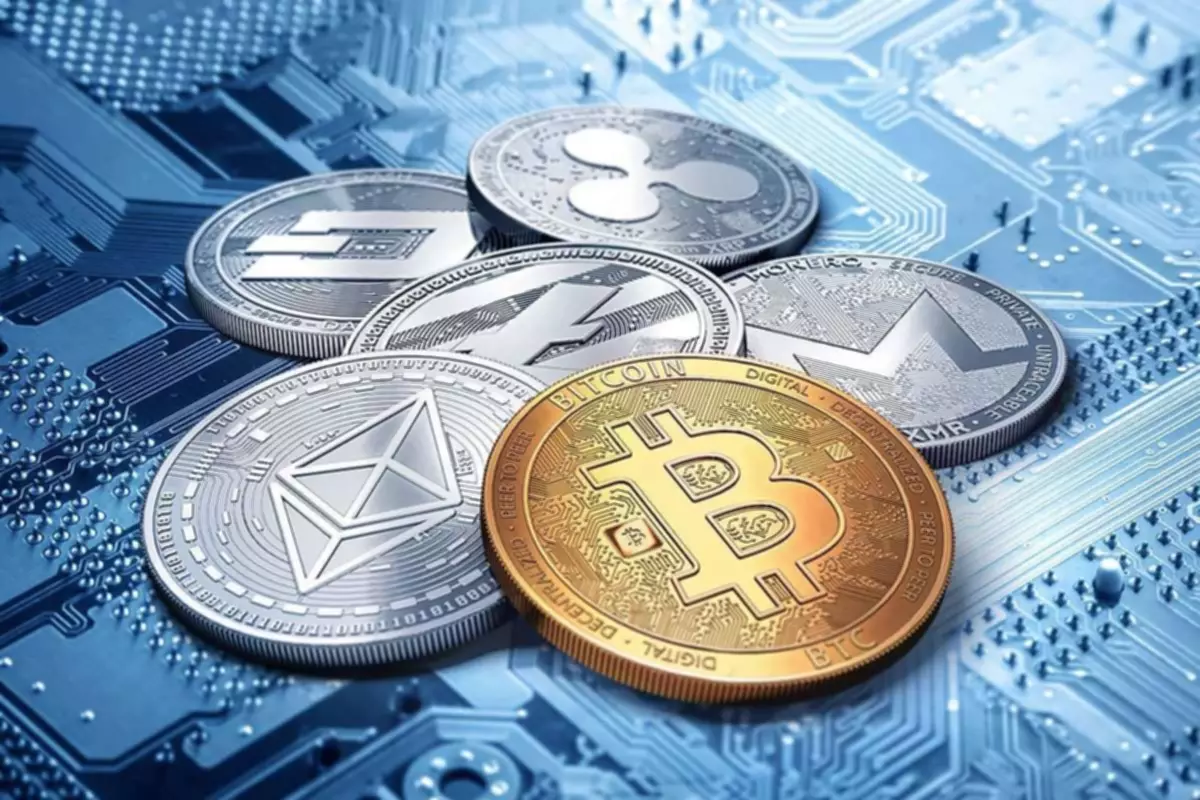How To Become A Liquidity Provider On Uniswap
Содержание
A BNB-BUSD LPT, for example, can be staked on PancakeSwap to earn the trading platform’s protocol token, CAKE. Once we have checked our price and liquidity range values, we can select the fees cost -called Gas – and proceed to select “Add Liquidity”. Here we can take an approximate of how much ETH we would need to exchange for 500 USDC. After we’ve selected our tokens, now we must introduce a figure in ETH that comes close to the desired amount of USDC we want to have. In this case, we must introduce in the ETH bar as much ether it takes to get to 500 USD and then click on “Review Swap”.
In the early phases of DeFi, DEXs suffered from crypto market liquidity problems when attempting to model the traditional market makers. Instead of having a seller and buyer match in an order book, liquidity pools helped solve this problem by incentivizing users to provide liquidity. This provided a robust, decentralised solution to DeFi liquidity, which was critical in accelerating the sector’s growth. Liquidity pools may have been born from necessity, but their innovation brings a fresh new way to provide decentralized liquidity algorithmically through incentivized, user funded pools of asset pairs. Liquidity mining is a process in which crypto holders lend assets to a decentralized exchange in return for rewards.
Seven Tips To Make Your Forex Broker Marketing Strategy Work To The Fullest
Instead, 0.3% of all trade volume is distributed proportionally to all liquidity providers. By default, these fees are put back into the liquidity pool, but can be collected any time. It’s difficult to know what the trade-off is between revenues from fees and losses from directional movements without knowing the amount of in-between trades. For example, some makers will agree to provide loss leader pricing, which quotes the lowest price found across multiple exchanges in order to attract traders from other venues. Venues regularly review their market makers’ balance sheets to ensure the maker’s creditworthiness. This review process helps venues decide which accounts will be allowed to temporarily trade to negative account balances.

Greater liquidity is vital for ensuring a smooth flow of transactions and enabling competitive prices to offer to traders. Although attacks on centralized exchanges are becoming less common, smaller decentralized exchanges continue to be hacked. On March 8th, 2021, a smart contract hack on the DODO DEX resulted in the theft of $3.8 million in bitcoin. Theoretically, these losses might be reversed, since they are technically only realized after the crypto is withdrawn. Many liquidity providers, on the other hand, have seen their crypto’s value plummet, anticipating that prices will rise again but they never did. This is especially true for smaller cryptocurrencies, with many of them collapsing and never resurfacing.
What Can I Do With Defi?
If the entire value of the prior liquidity pool rises to US$15,000, and Sam has a 10% stake in the pool, the LP tokens he received are now worth US$1,500. Cryptocurrency investing, https://xcritical.com/ like any other investment, has a certain amount of risk. While yield farming with LP tokens might improve overall profits dramatically, it also exposes investors to higher risks.
Who are LPs and How to Find the Best Forex Liquidity Provider For Your Business – Wales 247
Who are LPs and How to Find the Best Forex Liquidity Provider For Your Business.
Posted: Sat, 03 Sep 2022 07:00:00 GMT [source]
As an example, Uniswap occasionally offers its liquidity providers the ability to earn Uniswap governance tokens in exchange for providing liquidity for certain pools. Other protocols such as Balancer, Curve, and NFT20 are also well known for rewarding providers in addition to just the transaction fees. Crypto liquidity pools are critical components of the decentralised finance ecosystem, particularly when it comes to decentralised exchanges . Crypto liquidity pools are a technique that allows users to pool their assets in the smart contracts of a DEX to provide asset liquidity for traders to swap between currencies. Liquidity pools provide the DeFi ecosystem with much-needed liquidity, speed, and convenience.
Understanding Liquidity Pools And Liquidity Provider Tokens
There is also a specially dedicated Security Reserve Fund with 20,000 BTC. Huobi offers multiple investment opportunities for its users ranging from derivatives, futures, OTC trading as well as staking and lending. Users can access this liquidity provider from their smartphones to deposit and withdraw their money. The term refers to a collection of tokens or digital assets locked in a smart contract that provide essential liquidity to decentralized exchanges. Banks, financial institutions, and principal trading firms all act as liquidity providers in today’s markets. The different business models and capabilities of these liquidity providers allow them to serve the market in different ways.
Trader Y decides to hold while Trader X decides to provide liquidity to the FACTR/wBNB pair. In conclusion, this is an easy way to begin providing liquidity into Uniswap v3. If you need support to begin your journey as a Pairings by Sommelier user, you can contact our team here. So at this point we can see that I’m yet to have my USDC funds and already lost money to fees. For a second round to finally get my funds in USDC, I’ll try by submitting a smaller amount to swap, this time equivalent to 205 USDC (0.05 ETH).

Decentralized exchanges differ from centralized exchanges in the way they provide liquidity. Since DEXs do not have a person or entity in charge, users are encouraged to provide liquidity through liquidity pools, and in return they receive a percentage of trading fees. However, this does not take into consideration the fact that tokens might lose value or diverge in price based on supply and demand . When this happens it usually creates an imbalance in liquidity, resulting in an uneven and lower reward, also called impermanent loss.
The fees earned from transactions go directly into the liquidity pool, so your token holdings will appreciate proportionately with the growth of the liquidity pool. LedgerPrime is a cryptocurrency investment firm and one of the leading crypto liquidity providers in the industry. It offers options and derivatives trade with an aim to employ less volatile strategies for crypto investments. The protocol developers established LedgerPrime in 2017 with an exclusive mandate to make digital investing more scientific through data-driven technologies.
Therefore, it’s important to choose wisely where to deposit funds in a pool. Be the first to put your crypto investments on autopilot with digital asset allocation that helps you safely and securely optimize your portfolio. Flash Loans enable crypto users to create a loan without having to provide collateral in return. The process is entirely decentralized and does not require any kind of KYC documentation.
There are multiple ways for a liquidity provider to earn rewards for providing liquidity with LP tokens, including yield farming. No, users put liquidity into decentralized exchanges in order for others to trade, and by doing so they can earn fees. Yield farming refers to an investment strategy where cryptocurrency investors switch between different liquidity pools to earn the highest interest rates possible.
Most liquidity pools enable providers to redeem their LP tokens at any time without penalty, however, some may levy a small fee if they are redeemed too quickly. Liquidity providers on decentralized exchanges that employ the Automated Market Maker protocol are compensated with LP tokens, which are a unique sort of cryptocurrency. Individual contributions to the overall liquidity pool can be represented using these LP tokens.
Participate In Liquidity Mining Programs
When you swap ETH for DAI, your ETH is deposited into a liquidity pool and an equal amount of DAI is withdrawn in exchange. The pool you interact with contains tokens that were provided by many different people. All of these questions are obvious for any individual trying to explore the practical use cases of DeFi. The following discussion will help you understand the working of liquidity providers and liquidity provider tokens or LP tokens comprehensively. In the past, smart contracts have been exploited, leading to loss of funds.
As a result, a large order from an investor may have to be filled by a number of market-makers at potentially different prices. Your assets now provide liquidity for UniSwap traders and you’re earning fees and you will receive the LP tokens in your wallet. Liquidity provider tokens are tokens automatically generated by a DEX and issued to a liquidity provider once they contribute assets to a liquidity pool. These tokens represent one’s share of the fees earned by the liquidity pool.
In the context of cryptocurrency liquidity it refers to the ease in which a coin can be converted into cash or other coins. The term liquidity is generally used in the financial markets to describe the ease by which an asset can be converted into cash without difficulty. In terms of cryptocurrencies, liquidity is the ability of a coin to be easily converted into cash or other coins. Now you have LP tokens of that pool in your wallet, which represent your share of liquidity in the respective pool. Then you must ensure that you have enough supply of the two assets you intend to deposit. Finally, you must deposit both assets in order to receive your LP tokens.
As DeFi is built on the Ethereum network, Ether again becomes highly liquid and it is accepted and exchanged on all DEXs. Cryptocurrency has gained traction because of its uniquely decentralized structure. Many blockchain protocols, for example, reward individual participants for staking coins or running nodes. All of this being said, there is another reason why many people choose to become liquidity providers… Becoming a liquidity provider does carry certain risks however and is not a guarantee of profitable returns. There’s not a way around this scenario except to wait and see if liquidity increases in the future.

Unstaking your tokens is instant and you can redeem them on PancakeSwap at any time. This website does not constitute an offer to sell or a solicitation of interest to purchase any securities in any country or jurisdiction in which such offer or solicitation is not permitted by law. Nothing on this website is meant to be construed as investment advice and we do not provide investment advisory services, nor are we regulated or permitted to do so. You must make an independent judgment as to whether to add liquidity to portfolios. To avoid losing funds in fees we must check for price changes before proceeding with our swap.
As we have seen, liquid markets come with less risk so are more attractive to investors in the market. Many businesses that are creating their tokens are heavily reliant on the concept of Liquidity Pools to ensure increased liquidity and circulation of their tokens. Providing liquidity for a new token by creating a token pair, is one of the processes involved in an IDO. If there is a significant amount of assets stored in a smart contract, say over $1 million, the contract should be pretty secure. This is because if a hacker were able to hack the contract, they’d be able to seize all the funds that are held inside of it.
The Most Important Quality To Look For In A Liquidity Provider
Through AMMs, LP tokens solve the problem of limited crypto liquidity as they function as proof of ownership of your staked tokens and can be used in numerous ways. For example, on Balancer, the LP tokens are known as Balancer Pool Tokens . If you’re providing liquidity on SushiSwap for people to swap between ETH and USDC, your LP tokens will be USDC/ETH SLP tokens. Let’s find out what is DeFi, what are the categories of DeFi projects, Are DeFi projects liquid and the working principle of DeFi liquidity pools.
- Marko is a crypto enthusiast who has been involved in the blockchain industry since 2018.
- Liquidity providers are important parts of the DeFi ecosystem, and understanding how they work will help you better grasp LP tokens.
- To earn from your crypto assets, all you need to do is provide liquidity to 1inch pools.
- LP tokens work by opening up the avenues for indirect staking, which can resolve the issues of limited crypto liquidity.
These participants are urged to deposit a particular quantity of cryptocurrency into the AMM liquidity pool as liquidity. These liquidity providers are compensated for their assistance with a modest percentage of network fees. Warren is also a limited partner at Weave Markets — a digital asset hedge fund — and was the previous managing director of trading operations at Amplify Exchange. As an entrepreneur, Warren has built multiple products that were licensed and sold to hedge funds, proprietary trading offices and family offices. Anybody can become a market maker/liquidity provider as long as they meet the requirements.
Crypto Flashcards & Glossary
Competition among liquidity providers is high, and the best candidates will come to the table with features that go above and beyond the minimum offering. Flexibility may be the most critical factor, since the “best” provider is the one who makes the most financial sense for you or your firm. What liquidity solutions can a given provider offer given the size of your fund? Make sure that you have a clear understanding of your needs and articulate them honestly when meeting with a potential liquidity company. Their willingness to accommodate your ask should clue you in to their willingness to be flexible when the time comes to draw up a plan. This happens when the price of your assets locked up in a liquidity pool changes and creates an unrealized loss, versus if you had simply held the assets in your wallet.
Even popular “meme coins” like SafeMoon can be traded or deposited in liquidity pools. While taking part in liquidity pools can be somewhat challenging at first for crypto newcomers, the benefits of these new financial protocols suggest that liquidity pools are here to stay. When liquidity providers deposit funds in a pool, they are given a liquidity provider token representing their portion of the pool. Let’s explore the basics, risks, and how to get started with liquidity provider staking. If you are past the basics and ready to get started, you can jump right to the “Guide” section. Please remember that investing in any cryptocurrency assets is risky and this article should not be taken as financial advice.
Before the arrival of liquidity provider tokens, it was practically impossible to access Ethereum-based tokens. Generally, users had to lock in their assets in the Ethereum ecosystem during the period of use. It was practically impossible for token owners to access their tokens when they were in use. The BTC-USDT pair that was originally deposited would be earning a portion of the fees collected from exchanges on that liquidity pool. In addition, you would be earning SUSHI tokens in exchange for staking your LPTs.
If an asset within the LP of choice loses or gains too much value after being deposited, the user is at risk of not profiting or even losing money. For example, Ethereum can double in value within 5 days but the fees granted while farming it will not even cover half of what one would have made by HODLing. Impermanent loss is defined as the opportunity cost of holding onto an asset for speculative What is Crypto Liquidity purposes versus providing it as liquidity to earn fees. In terms of technical properties, LP tokens aren’t very much different from other tokens on the same network. For example, LP tokens issued by Uniswap and Sushiswap, both of which operate on the Ethereum network, are actually ERC20 tokens. Like any other ERC20 token, these LP tokens can be transferred, traded and staked on other protocols.
